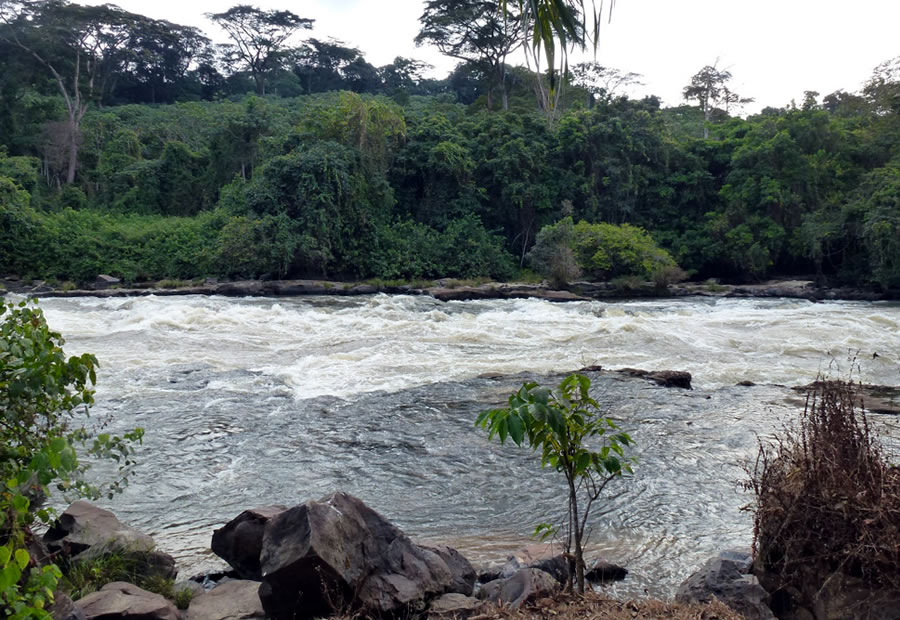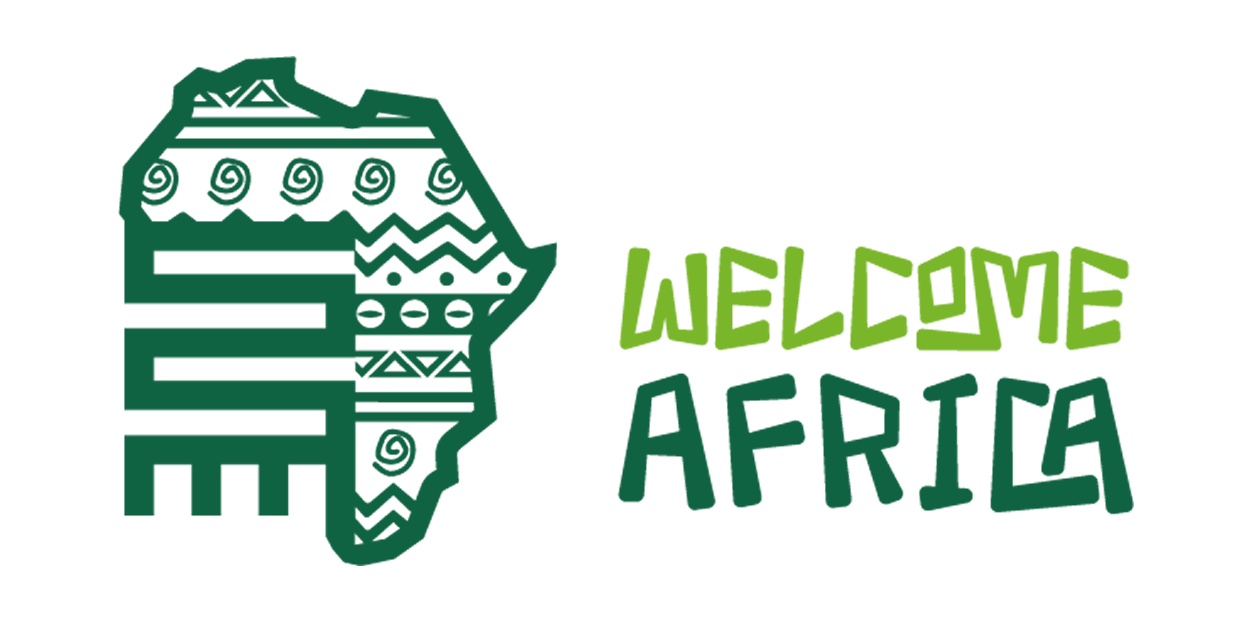 "We were sailing towards Africa, the real Africa, the great Africa; the Africa of unfathomable forests, deleterious miasmas, inviolate solitudes, towards the great black tyrants who are at the heart of rivers that never end".
"We were sailing towards Africa, the real Africa, the great Africa; the Africa of unfathomable forests, deleterious miasmas, inviolate solitudes, towards the great black tyrants who are at the heart of rivers that never end".
(LOUIS-FERDINAND CÉLINE, Journey to the End of the Night).
The Ogooué River, as tempestuous and dangerous as the Congo, although it does not carry its fame, the most beautiful and at the same time violent equatorial river in the world. This is how the English explorer Mary Henrietta Kingsley described it in her diaries on West Africa. She fell in love, as I did, with this immense Gabonese river, which she so often paddled up in a canoe. A navigable river that rises in the Ntalé Mountains in the Republic of Congo, enters Gabon, dividing it into two halves, is more than 1,000 km long and flows into the Atlantic, forming a marshy delta south of Port-Gentil, next to the Gabonese oil platforms. It is impossible not to love the Ogooué River, especially when you have dared to cross it in rustic boats, canoes or dugout boats. Impossible to forget the sunsets from its waters.
Why did a 19th century "Victorian spinster" decide to travel to Africa's little-known interior, despite all the previous information that advised against it? I now know the answer. Mary Kingsley's adventures in those latitudes, dressed as a governess and carrying a parasol, no doubt inspired John Huston when he directed Katherine Hepburn in The Queen of Africa in 1951.
This legendary woman, although precisely because of her sex she was not as recognised as other famous explorers of the African continent - Burton, Speke, Livingstone, Stanley... - made important contributions to science, especially ethnographic ones. He was a novel character, genuine and courageous, with a short life, but very adventurous in his later years. She travelled only with her imagination until, at the age of thirty, she was freed from her family obligations and with an income of 500 pounds a year.
Journalists know the importance of sources of information and how biased or biased they can be. Mary Kingsley must have sensed this after consulting existing missionary documentation and various groups - friends, doctors... - before setting out on her journey to West Africa. Those closest to her knew little or nothing about the territory, except that it was a place not to be recommended because of epidemics. The doctors also warned him of the health dangers, because in West Africa, in addition to diseases transmitted by ingestion of water and food, deadly diseases such as malaria and yellow fever are endemic. The "white man's grave" was then the most widespread metaphor for the region. Joseph Conrad had not yet written Heart of Darkness.
I, who was obviously unaware of the unhealthiness of the area that awaited me and the possibility of contracting one of these tropical diseases, was vaccinated against everything that Foreign Medicine prescribes and the guidelines recommend.

West Africa was ultimately presented as an "unhealthy", vast, largely unexplored region of swampy mangrove swamps and rainforests. But even this alarming news did not change his mind, and in July 1893, with a good supply of quinine for malaria and other medicinal remedies, he left the port of Liverpool on the freighter Lagos. She did so with evident fear in her body, especially knowing - an ironic irony that closes the text written by the explorer - that the shipping companies bound for West Africa "would not issue return tickets".
Today, such extremes no longer exist, but it is difficult to travel through a country that is eighty percent river-based, with very limited means of transport. Being cut off in Gabon for several days for lack of fuel has become routine, despite the fact that Gabon is an oil-exporting country. But the experience pays off if you wait in Lambaréné, the African city of hospitality where a German doctor, Albert Einstein's nephew, founded a hospital for lepers.
Mary Kingsley travelled up the river, traded with the natives and came to live with the cannibalistic Fang tribe of Gabon, studying their traditional, fetishistic religious practices, of great interest in Victorian times. To do so, he had to cross swamps, swim across them and face hippos and crocodiles, umbrella in hand. Living with those cannibals was certainly a daring experience in the 19th century. Of course, first she had to shoot an elephant, not just for entertainment, as some people still do, but so that the natives would respect her and not eat her, as they did their enemies. Today, the Fang are a Bantu ethnic group living in southern Cameroon, Gabon and Equatorial Guinea. And they no longer wear a tibia adorning their hair or eat the white explorer in the collective village pot, although this representation of anthropophagy haunts us like a ghost in our collective Eurocentric subconscious.
In the 19th century, the only women who went to Africa were the wives of missionaries, civil servants or explorers. Mary Kingsley travelled alone, mostly on foot and unescorted, combating the common clichés about the continent, but never forgoing her British habit of having a cup of tea.
In addition to her corseted black dresses and thick petticoats, Mary Kingsley stuffed her enormous curiosity into the suitcase that would accompany her on this "ill-advised" trip to the African continent. I did the same. And that was her and my success, because curiosity, the imperative desire to acquire knowledge and experience, is precisely the factor that has made us advance, the driving force behind science and discoveries. Intellectual curiosity is - as the Argentine philosopher and psychologist José Ingenieros said - "the negation of all dogmas and the driving force of free examination". That is what Mary Kingsley and I did, freeing ourselves from prejudice and defying fate. This is the only way to write the history of humanity, the most beautiful journey in the world.
[*] The quotations that appear in this story correspond to:
CÉLINE, Louis Ferdinand. Journey to the End of the Night. Seix Barral. Barcelona, September 1983 (1st edition).
KINGSLEY, Mary. Travels in West Africa. Valdemar. Madrid, October 2001 (1st edition).
INGENIEROS, José. Quote at https://proverbia.net/cita/453056735-la-curiosidad-intelectual-es-la-negacion-de-todos-
